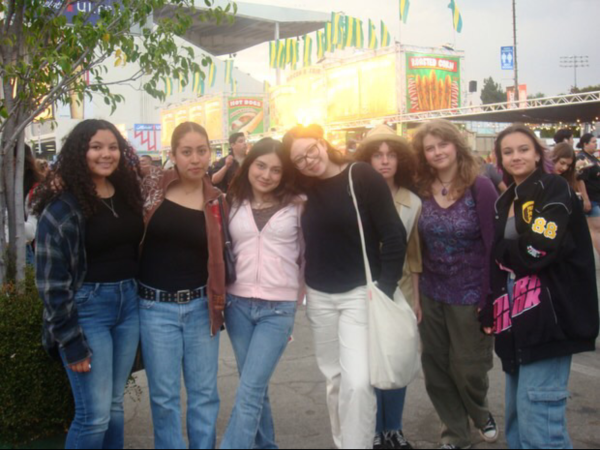America needs more walkable cities
Many Americans are dependent on automobiles for transportation. This is a tired system that stresses those who cannot afford a car, forcing them to turn to our widely underdeveloped and underfunded public transportation system. Our country is in desperate need of an overhaul of not only our systems but our public infrastructure, roads, and public services.
The main issue lies in our car dependency. This country’s infrastructure rapidly developed into a more car-centric nature as the automobile industry boomed in the 1920s. Since then we have done away with our light-rail public transportation and moved onto wider lanes for our SUVs and pickup trucks. Urban areas that used to be bustling with civilian life have had their lives cut short due to the introduction of freeways that route around smaller towns. The divide between communities has never been greater since the creation of the highway which was built on the destruction of homes and acts as a physical “red line” separating
economically-different portions of the city. Additionally, new highway projects in the nation are all but money pits. Within cities, the actual urban areas have been minimized and, in some cases, torn down completely. All to be replaced by department stores with parking lots twice their size, filling the landscape with their signature bleak asphalt desert. Can you believe that at one point Los Angeles had over 1,000 miles of privately owned rail transit? By 1963, the lines were completely demolished and replaced with bus services. Since then, public demand for the rail services pushed for it to make a comeback and now Los Angeles has a meager 111 miles.
Now to avoid sounding too nihilistic, I wish to present solutions or alternatives to the crisis this country finds itself in. Seattle is a model of how transportation can rapidly develop in a short amount of time in a large urban setting. In 2019, Seattle was the frontrunner in spending per capita on transit. Since then they have seen a massive decline in car usage and upticks in transportation use. More American Metros can follow the same blueprint Seattle has put into place. Here is a guideline to improve our cities.
An improvement in Bus service and Subway systems
Bus stops should be implemented within a short walk, about 10 minutes, from most of the population, and the bus frequency must be increased. For too long, people have turned to forms of personal transportation as a means to remedy the long waits and inconvenience of bus transit. However, cities can turn this around by spending more on the improvement of bus stops and most importantly their safety. Putting roofs and adequate benches on all safely placed stops would allow for greater and more trusted use of bus transit. Keeping not only the stations clean but the buses themselves makes public transportation a lot more attractive to a city’s populace. The same goes for subway systems. This, in turn, would result in getting cars off the road and improving traffic congestion city-wide.
In addition to the proposition of increased funding, public transit must be equitable. As those living on or below the poverty line seek an adequate way of commuting to work, or simply getting around the city, the transit systems must be seen as viable options to consider without having to worry about fares. As Seattle has done, fare evasion should be decriminalized.
More walkability
The 15-minute city is an urban planning concept that focuses on cities being able to have necessary services all within 15 minutes of a person’s home. Education, healthcare, work, shopping, and recreational activities should all be within this reasonable distance. The density of cities is meant to be celebrated, as it boasts healthier social ties and easier access to goods and services, greatly improving the economy. 15-minute cities are heavily contentious in the United States, but, in many cities in Europe, they act as a model for healthy, social living. European cities like Barcelona, Milan, Paris, and Madrid all boast titles of some of the nicest cities to commute via walking. Their highly dense urban areas are clean, friendly, and do not feel congested or constrained by streets. While car usage is common in these cities, a majority of the population goes about their day as pedestrians, this model of living has benefits to social life, productivity, and creativity within a city’s populace. As radical as it may sound, perhaps it is time to start leaning in the direction of car-free portions of cities. Restricting motor vehicle access will not negatively impact local businesses, as the more pedestrians there are wandering inside shops the more businesses thrive. For example, Gran Vía street in Madrid, Spain saw an increase of almost ten percent in business after the improvements to the pedestrian realm and the restriction of vehicular traffic. Pedestrianization is what will save U.S. cities from auto-oriented development.
Mixed-use housing developments
In some densely populated U.S. metro areas, everything ranging from mixed-use housing to protected bike lanes, and car-free pedestrian-only zones are common. Take a city like New York City, often the crown jewel of city planning, which combines all these factors culminating in a vibrant city life. To Americans, mixed-use developments are starting to be more popularized within some urban planning circles but throughout the rest of the world, mixed-use developments are simply the norm. A city like Amsterdam carries with it pockets of shops and restaurants dotted throughout. These retail areas breathe life and bring character and charm to residential neighborhoods, tending to be quieter and calmer. However due to euclidean and non-hierarchical zoning in the United States, when an area is designated as “residential,” the only legal thing allowed to be built there is residential housing, tearing down any possibility of a shop or restaurant, and the sense of community along with it. When a zone is listed as “R-1” only single-family homes can be built in that zone, and no denser housing like condominiums are allowed, making room for more suburban sprawl. In the United States, separation is a key factor in its planning. However, in Europe, there is a different story. European cities try to find balances within the fabric of their towns and cities providing each citizen with equitable access to different experiences in life. These cities just make sense: the cooperation of shops, a doctor’s office, schools, and restaurants all within walking distance of one’s home is perfect. American cities often fail to realize this and become further engrossed in the idea of separation by strict zoning ordinances. The introduction of low-impact commercial spaces, like cafes, restaurants, and retail shops into residential areas could bring with them life and rehabilitate car-centric cities in the United States.
A recent transit project spanning from Los Angeles to Las Vegas has plans to break ground this year. The ten billion dollar bullet train, departing from Cucamonga Station and arriving just outside of The Strip in Vegas, would be the United States’ first high-speed rail project, planning to take its course in between the I-15 north and southbound lanes, the train could reach up to 200 miles per hour, cutting the transit time to about 2 hours and 15 minutes. The private company, Brightline West, is looking to fund about half of the project while the federal budget pays for the rest.
Now for my thoughts, I genuinely could not care less. I feel as if sending thousands of people every month into Los Angeles, a city famous for its poor public transit, stuck without a car could only lead to disaster. It is only if Los Angeles upgrades their current transit system to reliable service, that this bullet train will see any modicum of success. Now going into Las Vegas, I am sure that it will bolster their economy and tourism but it makes you think, is funding more gambling services really worth more than bolstering our own cities’ transportation infrastructure? I would call this a fluff transportation project, and the only possible benefit would be the reduction of cars and thus pollution.
Hello there! Our goal is to provide relavent, engaging journalism for readers of all ages. Your donation will support the student journalists of the Wolfpacket at Claremont High School, and will allow us to purchase equipment, print our monthly issues, and enter in journalism competitions. We appreciate your consideration!

Lorenzo is a Senior at Claremont Highschool and a reporter for the Wolfpacket. Their current favorite musical artists include Youngboy Never Broke Again,...







